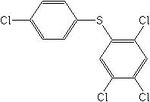Difference between revisions of "Tetrasul"
From Coastal Wiki
(→Notes) |
Dronkers J (talk | contribs) |
||
| (One intermediate revision by the same user not shown) | |||
| Line 4: | Line 4: | ||
== Notes == | == Notes == | ||
| − | + | ||
{| class="toccolours" border="1" style="float: right; clear: right; margin: 0 0 1em 1em; border-collapse: collapse;" | {| class="toccolours" border="1" style="float: right; clear: right; margin: 0 0 1em 1em; border-collapse: collapse;" | ||
! bgcolor="#FF8888" | Tetrasul | ! bgcolor="#FF8888" | Tetrasul | ||
| Line 34: | Line 34: | ||
==References== | ==References== | ||
<references/> | <references/> | ||
| + | |||
{{author | {{author | ||
|AuthorID=19826 | |AuthorID=19826 | ||
|AuthorFullName=Daphnis De Pooter | |AuthorFullName=Daphnis De Pooter | ||
|AuthorName=Daphnisd}} | |AuthorName=Daphnisd}} | ||
| − | [[Category: | + | |
| + | [[Category:Toxicity chemicals]] | ||
Latest revision as of 13:37, 9 August 2020
Notes
| Tetrasul |
|---|

|
| Formula |
| C12H6Cl14S |
The use of tetrasul has been banned in Europe since 2003[2].
Tetrasul has a low water solubility (0.03 mg/l) and is very hydrophobic. It therefore is very likely to adsorb to particles and the sediment and to have a high potential towards bioaccumulation.
Tetrasul becomes toxic for fishes at concentrations above 11 mg/l. As a substance witch bioaccumulates and possibly also biomagnifies there may be risks to marine mammals by secondary poisoning. Mammals which consume more than 3,9 g per kilogram of body weight might be affected. Chronic exposure might cause effects at lower doses[1].
Environmental standards and legislation
Included in the OSPAR list of substances of priority action
References
Please note that others may also have edited the contents of this article.
|